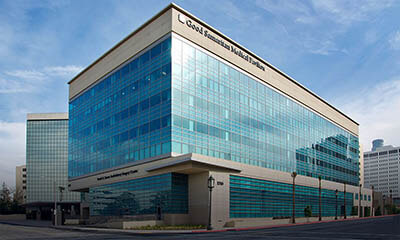A persistent cold accompanied by nasal drainage and blockage, which are worsening with time, can be cause for concern. If you have been in this condition for 10 days or more, it may indicate an inflammation of the sinuses. This is called sinusitis in medical terms. When sinus pressure lasts for weeks on end, you have chronic sinusitis. The problem will not go away without the intervention of an ENT specialist. Sinusitis affects around 30 million adults in the US annually in the United States alone. The economic impact of this condition runs into billions of dollars due to millions of days in lost time from work. Sinusitis causes around 73 million restricted activity days every year.
What Is Sinusitis?
Sinuses are hollow spaces in the bones around the nose, connected to the nose through narrow channels. When you suffer from cold, viruses and bacteria enter the sinuses and proliferate. The immune system of our body reacts to this development by causing a swelling in the sinus lining. This blocks off the channels that drain the sinuses, resulting in the filling up of mucus and pus in the nose and sinus cavities.
Types of Sinusitis
The types of sinusitis are acute, sub-acute, chronic, and recurrent. Acute sinusitis may last from a few days to up to four weeks. It may go away with minimal or no treatment. Chronic sinusitis may need more detailed treatment. The symptoms never go away for long periods, causing extreme discomfort. If the condition does not improve with medications, the ENT specialist may suggest surgery to provide relief from the condition.Recurrent sinusitis is a condition in which you may suffer from four or more bouts of sinusitis in one year. The only relief is that you will also be free of symptoms for some time in between.
Why You Must See an ENT Specialist for Chronic Sinusitis
If you have chronic sinusitis, you must see an ear, nose, and throat (ENT) specialist.
These doctors specialize in the treatment of all ailments related to these three organs, including chronic sinusitis. The initial treatment may involve the use of an endoscope, which is a small and flexible tool that allows the doctor to have a clear and closer view of the inside of your nose and the sinuses. If the doctor suspects any structural issues such as changes in the shape or alignment of the nose, they may order a Computed Tomography Scan (CT scan) or a Magnetic Resonance Imaging (MRI) test.
MRI test can also help the ENT specialist detect if the nasal polyps have spread beyond the nose area or of the presence of an abscess or infection in the nasal cavity. If the MRI scan detects the spread of an infection, your doctor may order a biopsy to check if the infection is serious or it can be treated using medications. In most cases, chronic sinusitis is not caused by bacteria. In the rare instances of a bacterial infection, the condition is treated using antibiotics.
What Is the Line of Treatment?
For non-bacterial chronic sinusitis, the line of treatment suggested by the ENT specialist will be different.
They will recommend:
- Carrying out allergy tests to know the triggers of the condition
- Avoiding allergy triggers and other environmental factors
- Use of intranasal corticosteroid sprays
- Treatment of any underlying condition, such as allergies, asthma, or immune deficiency, with the appropriate medications.
- Correcting of structural problems through surgery (such as Ballon Sinoplasty)
In rare cases, the doctor may carry out balloon sinus ostial dilation. This is a process that involves the insertion of a balloon into a sinus cavity. It helps in opening the nasal space and makes more room.
Is Chronic Sinusitis Curable?
Chronic sinusitis symptoms can be cured. In most cases, the ENT specialist will have to use more than one therapy. The condition is not life-threatening but can create severe health issues if left untreated, as the infection may spread beyond the sinuses. When contacting LACENTA, provide your nurses and doctor with details of your sinus symptoms as accurately as possible. Keep a note of things that have made you feel better. Identify the things and situations that make you feel worse during sinusitis. Make sure you take the medications prescribed as instructed to ensure better management of your condition.
Next time you experience the symptoms of sinusitis, connect with our team. We’ll not just treat your symptoms; we’ll help you find the cause. If you are currently experiencing symptoms, book an appointment at one of our 6 locations today.
Author
 Dr. Geoffrey B. Trenkle, D.O.
LACENTA C.E.O.
Dr. Geoffrey B. Trenkle, D.O.
LACENTA C.E.O.


























